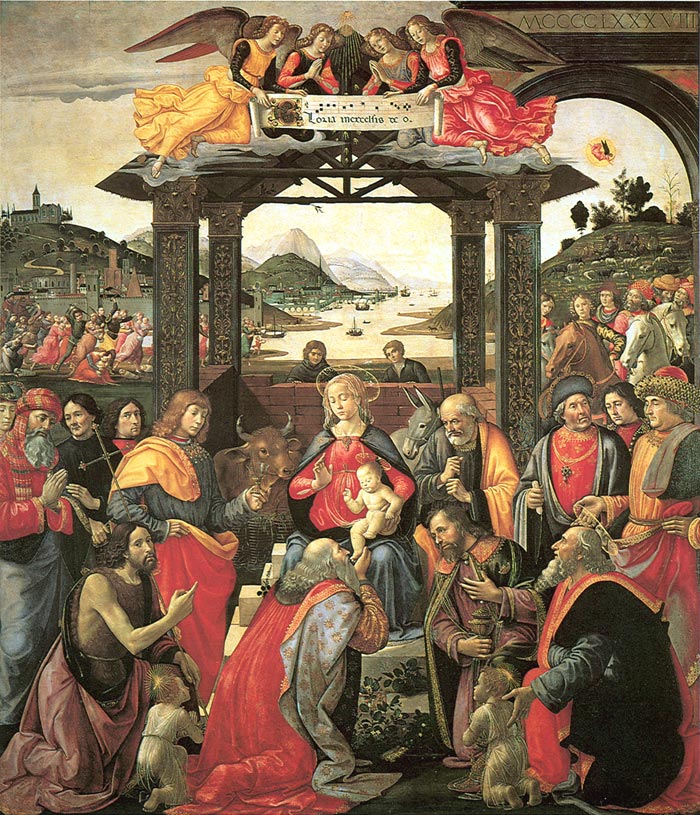 |
|
Domenico Ghirlandaio, Adoration of the Magi, 1488, Spedale degli Innocenti, Firenze |
|
|
In 1485 Domenico Ghirlandaio received the commission for the Adoration of the Magi for the main altar in the church of the Spedale degli Innocenti. [1] The Francesco di Giovanni Tesori, the prior of an orphanage ordered a panel painting of the Adoration of the Magi from Ghirlandaio.[2] The picture was intended for the main altar of the Spedale degli Innocenti, a foundling hospital. The prior of the church, Francesco di Giovanni Tesori,, also commissioned the predella with stories of the Virgin and the great cornice of the altarpiece. The latter had been executed by the carpenter Francesco Bartolo on designs by Giuliano da Sangallo, while the scenes of the predella are the work of one of Ghirlandaio's pupils, Bartolomeo di Giovanni.
The painting remained over the altar until 1786, when the inside of the church was restored and the altarpiece placed in the wall behind the altar. In 1917 it was transferred to the Hospital's museum. Vasari writes about the painting: "In the church of the Innocenti he painted in tempera a much-admired picture of the Magi, containing some fine heads and varied physiognomies of people both young and old, notably a head of the Virgin, displaying all the modesty, beauty and grace which art can impart to the Mother of God". There are so many saints in this Adoration that it is not easy to make out the three Magi. On the left, Saint John the Baptist is kneeling and pointing to the Madonna. The orphans of the Spedale are represented by two of the innocent boys who were killed during the Slaughter of the Innocents in Bethlehem, kneeling in the foreground. There are gaping bloody wounds to their faces, arms and necks. In this Adoration of the Magi, Ghirlandaio's carefully thought out use of colour is particularly impressive: Ghirlandaio distributes the glowing colours evenly. Mary in the centre is wearing a blue cloak over a red dress. The oldest king kneeling in front of her is wearing a variation of these colours combined with yellow. To the left of Mary, the youngest king holding the valuable goblet in his hand - he almost looks like Saint John the Evangelist - is also dressed in blue, yellow and red. The figure standing on the right edge of the picture wearing an expensive hat repeats this combination of colours, though now the blue and yellow are reversed. In the second figure from the right, wearing the blue hat, the Madonna's colours of red and blue are visible again, and they are repeated in clothes of the bearded man wearing a turban on the left edge of the picture. Between the Madonna and the man with the blue hat on the right, the artist creates a yellow highlight, though with a weaker blue accent, in the figure of Joseph. This row of figures alone produces a rhythm of colour from left to right: red and blue; yellow, blue and red; red and blue; yellow and blue; red and blue; yellow, blue and red. The work represents one of Ghirlandaio's most important works. Here too the assistants were at work. Indeed, in the scene of the Slaughter of the Innocents in the background, Berenson recognized the hand of Bartolomeo di Giovanni, the author of the stories from the predella. |
|
||
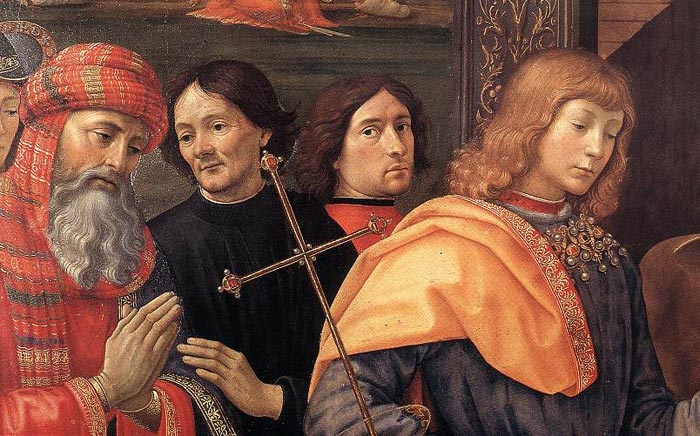 |
||
Domenico Ghirlandaio, Adoration of the Magi (detail, self Portrait), 1488, Spedale degli Innocenti, Firenze |
||
| Ghirlandaio (second from the right) gazes out at us from this picture, more modestly than in his other self-portrait (like in the Tornabuoni Chapel or in the Sassetti Chapel). It is thought that the churchman dressed in black in front of him is the man who commissioned the panel painting, Francesco di Giovanni Tesori. Above these two portraits, the Slaughter of the Innocents in Bethlehem is shown. The town beyond this, in which we can see monuments such as the Colosseum, Trajan's Column, the Torre del Milizie, and a pyramid, is meant to be reminiscent of Rome. | ||
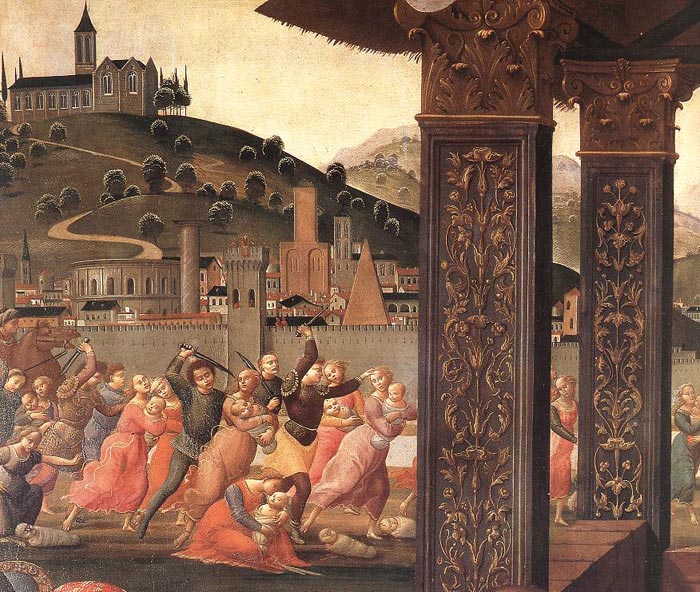 |
||
Domenico Ghirlandaio, Adoration of the Magi (detail, Slaughter of the Innocents), 1488, Spedale degli Innocenti, Firenze |
||
| In the harrowing scene of the Slaughter of the Innocents in the background, Berenson recognized the hand of Bartolomeo di Giovanni, the author of the stories from the predella, whom he poetically called "Domenico's friend".
Ghirlandaio (second from the right) gazes out at us from this picture, more modestly than in his other self-portrait (like in the Tornabuoni Chapel or in the Sassetti Chapel). It is thought that the churchman dressed in black in front of him is the man who commissioned the panel painting, Francesco di Giovanni Tesori. |
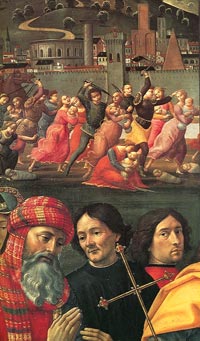 |
|
|
||
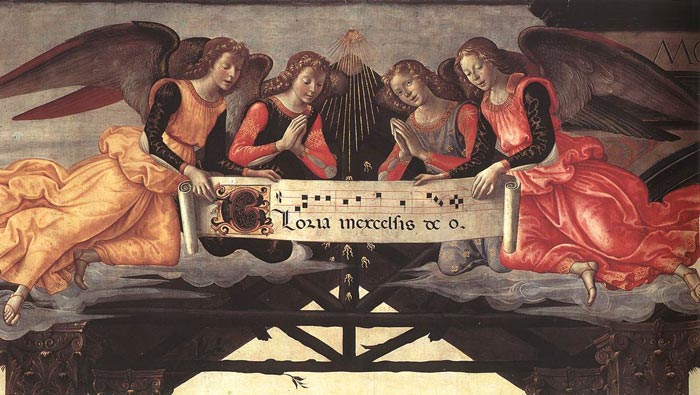 |
||
Art in Tuscany | Domenico Ghirlandaio Giorgio Vasari's Lives of the Artists | Domenico Ghirlandaio, painter of Florence
|
||
Holiday accomodation in Tuscany | Podere Santa Pia | Artist and writer's residency
|
||||
Podere Santa Pia |
Podere Santa Pia, garden view, April |
View from Podere Santa Pia
on the coast and Corsica |
||
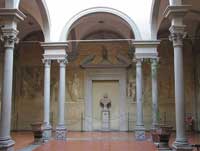 |
||||
Siena, Palazzo Sansedoni |
Bagni San Filippo |
Choistro dello Scalzo, Florence |
||
The façade and the bell tower of San Marco in Florence |
Piazza della Santissima Annunziata in Florence |
Florence, Duomo |
||
The Church of Ognissanti was founded in 1251 by the Ordine degli Umiliati, rationalized the organization of the hamlet located on the site (it was outside the city walls at the time), which was specialized in woolworking. Address: Via Borgognissanti 42 - Florence |
|
|||




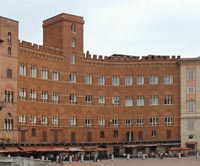
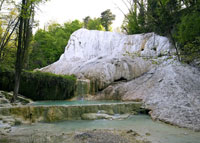
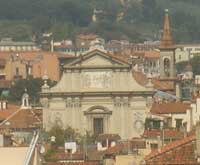
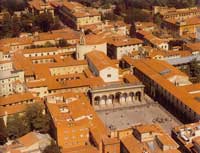

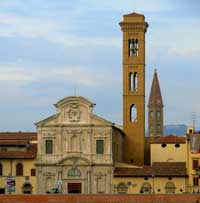 Church of Ognissanti
Church of Ognissanti